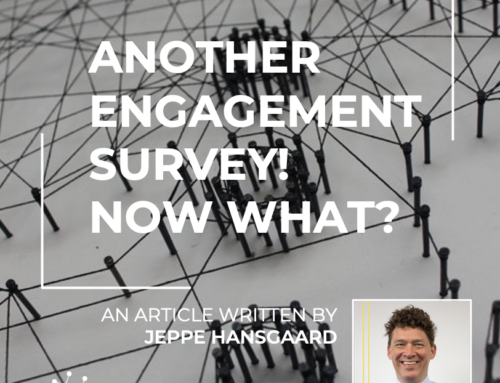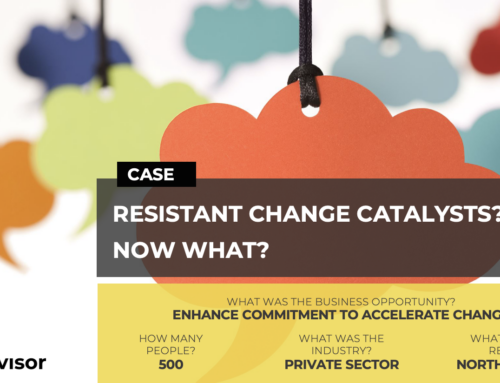FROM OUR CEO
On Paper It looked Good… But It Failed Because of What Was Disguised
September 29th, 2023 | From our CEO
In most organizations, we like structures, processes, boxes etc. It creates sense of order and control and makes it easier to decide.
Regretfully it disguises what is really going on, when people connect to each other, help each other, innovate, and collaborate together, or just try to make sense of what is going on. This means that our decisions have consequences that if we had known about the disguised organization would have avoided AND it blocks us from succeeding with change.
Here is an example of the organizational structure of a 900-person company, we worked with. Lots of boxes. At first look a very flat organization. Highly paid consultants had been hired in to delayer the organization, expand the span of control and decentralize decision-making, and on paper it looked good.

The reality was, however, that it ignored legacy. People still connected to the ones they always had connected to for work. The reality of the work was a lot more complex than the drawing that looked good in paper but did not allow the people to get their daily job done. For that they needed their network.
The new organizational structure was only creating unneeded friction.

When they understood what really was going on, they understood they needed to engage the people in the change and recognize the value of strong networks, if they wanted to delay. Going with the flow of the people – not against it, cutting the fewest possible collaboration lines, and when doing it making sure attention was given to rebuilding new connections and explaining why others were cut. Telling the people who were to connect with whom, about what, when and why.
Do you remember the real organization, when you drive change? – Without its support, you never succeed.
FROM OUR CEO
On Paper It looked Good… But It Failed Because of What Was Disguised
September 29th, 2023 | From our CEO
In most organizations, we like structures, processes, boxes etc. It creates sense of order and control and makes it easier to decide.
Regretfully it disguises what is really going on, when people connect to each other, help each other, innovate, and collaborate together, or just try to make sense of what is going on. This means that our decisions have consequences that if we had known about the disguised organization would have avoided AND it blocks us from succeeding with change.
Here is an example of the organizational structure of a 900-person company, we worked with. Lots of boxes. At first look a very flat organization. Highly paid consultants had been hired in to delayer the organization, expand the span of control and decentralize decision-making, and on paper it looked good.

The reality was, however, that it ignored legacy. People still connected to the ones they always had connected to for work. The reality of the work was a lot more complex than the drawing that looked good in paper but did not allow the people to get their daily job done. For that they needed their network.
The new organizational structure was only creating unneeded friction.

When they understood what really was going on, they understood they needed to engage the people in the change and recognize the value of strong networks, if they wanted to delay. Going with the flow of the people – not against it, cutting the fewest possible collaboration lines, and when doing it making sure attention was given to rebuilding new connections and explaining why others were cut. Telling the people who were to connect with whom, about what, when and why.
Do you remember the real organization, when you drive change? – Without its support, you never succeed.
Related articles
Share article
Share article








